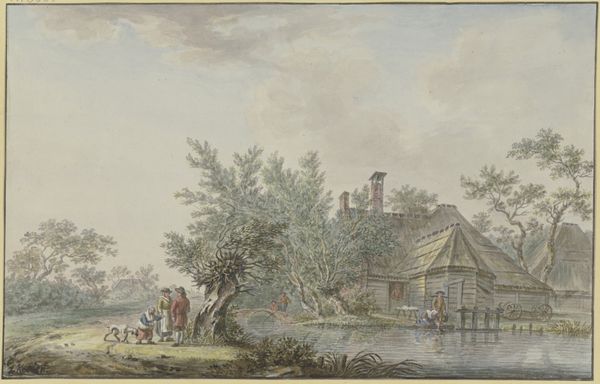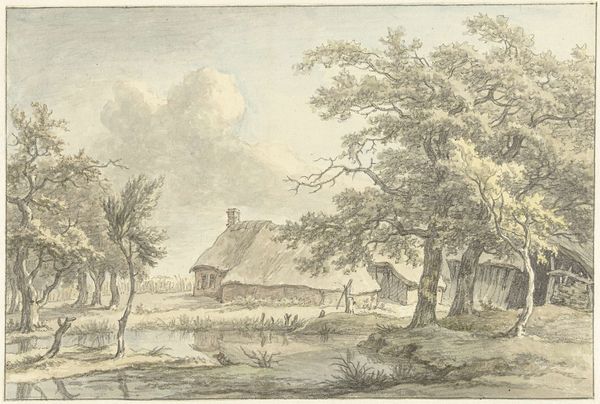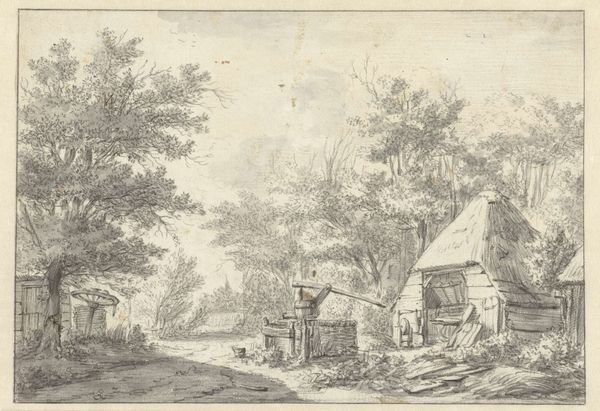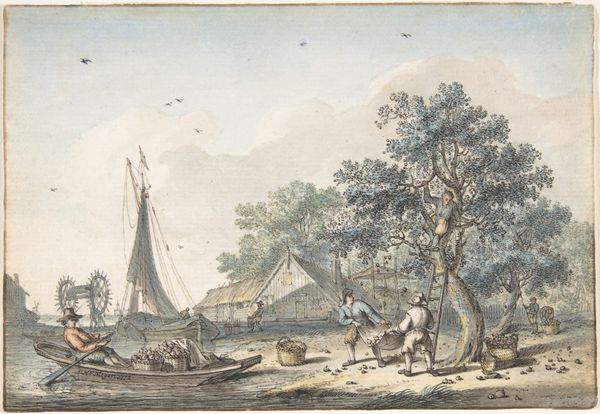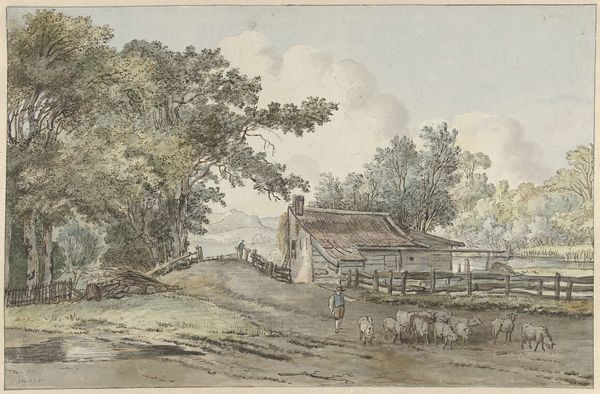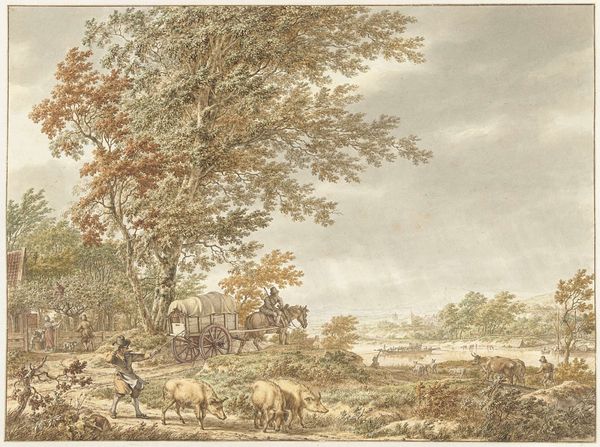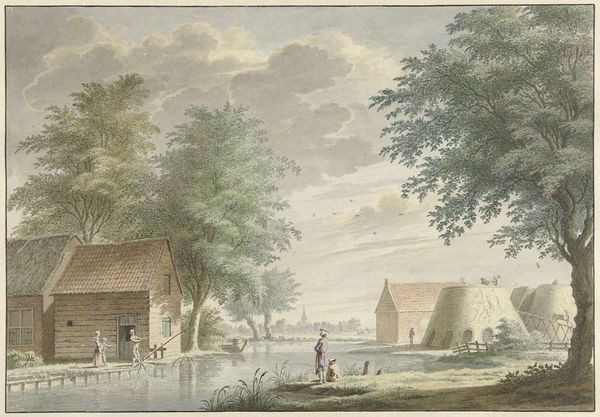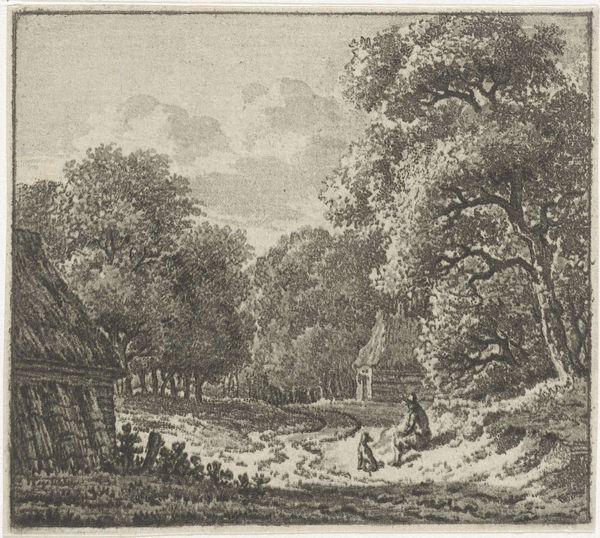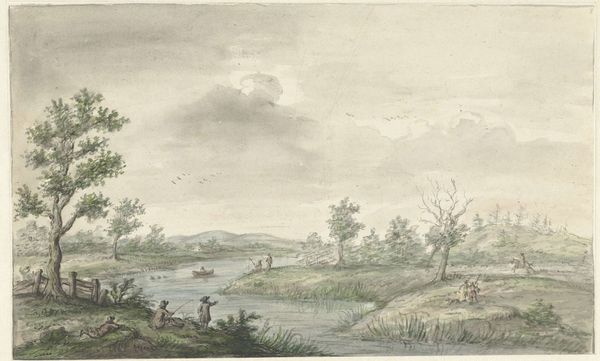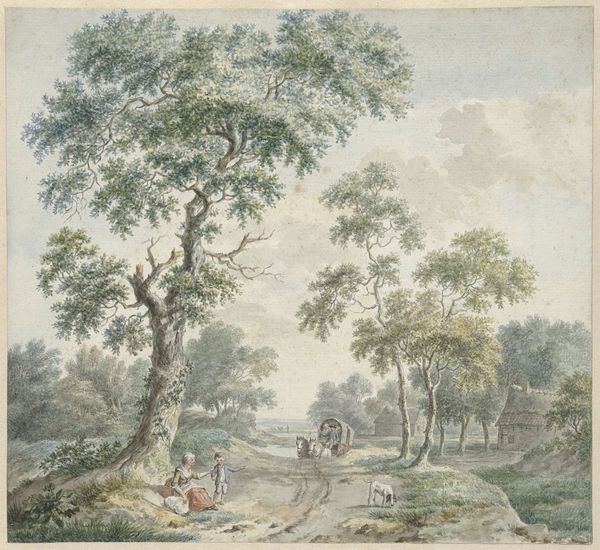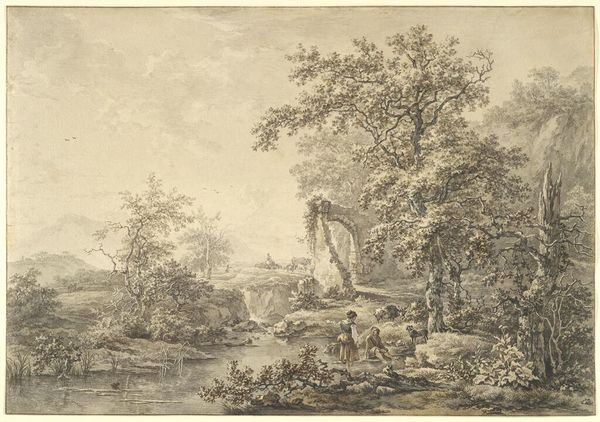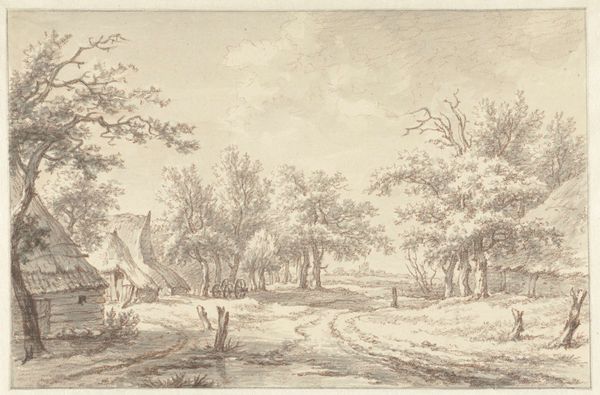
Dimensions: height 206 mm, width 277 mm
Copyright: Rijks Museum: Open Domain
Curator: Before us is “Boerenschuur bij een vaart aan een boszoom,” or “Farmhouse by a Canal at the Edge of a Forest,” a watercolor and ink drawing by Jacobus Versteegen, made sometime between 1745 and 1795. It’s currently held in the Rijksmuseum. Editor: Immediately striking. The subdued palette evokes a sense of serene melancholy. It feels muted, like a half-remembered dream. The texture of the thatched roof on the right creates such a cozy juxtaposition with the almost mournful atmosphere. Curator: Indeed. Versteegen masterfully employs layering and delicate washes to construct a visual syntax that emphasizes depth and perspective. Note how the interplay of light and shadow informs the overall composition. The lines create complex layers to suggest recession and space. Editor: What intrigues me is the direct connection to labor implied here, although we're not necessarily seeing anyone *doing* it. This isn’t some grand estate. You’re drawn to think about who would construct such a structure. Where would they have sourced the lumber? Curator: You raise a fascinating point. The meticulous rendering, although subtle, guides us. It creates a powerful juxtaposition between the grand Romantic landscapes so prevalent at the time and the humbler scenes that would've composed much of lived existence. Observe how the structural rhythm directs your eye. Editor: And what is so interesting here is this connection to an artist painting *en plein air*. I mean, what sort of preparation would this work have demanded? What would he, or someone working like him, choose to carry with him on a day like this, what sort of labor would that alone require? And that work ethic shows; his attention to representing materials is compelling. Curator: Yes, that act of bearing witness and his translation of what he saw—it truly captures a fleeting moment. The way he composes his marks generates a deep sense of space and being. The whole affair strikes the viewer in a most interesting fashion. Editor: It definitely pulls you into a bygone era, forcing you to consider not just what the landscape *looked* like, but who and what it was for. What would their lived experience feel like day-to-day in contrast to what Versteegen offers on the page? Curator: It serves as an exemplar of his craft, inviting extended consideration on his method. Editor: A small gem—inviting one to ruminate on broader material existence.
Comments
No comments
Be the first to comment and join the conversation on the ultimate creative platform.
